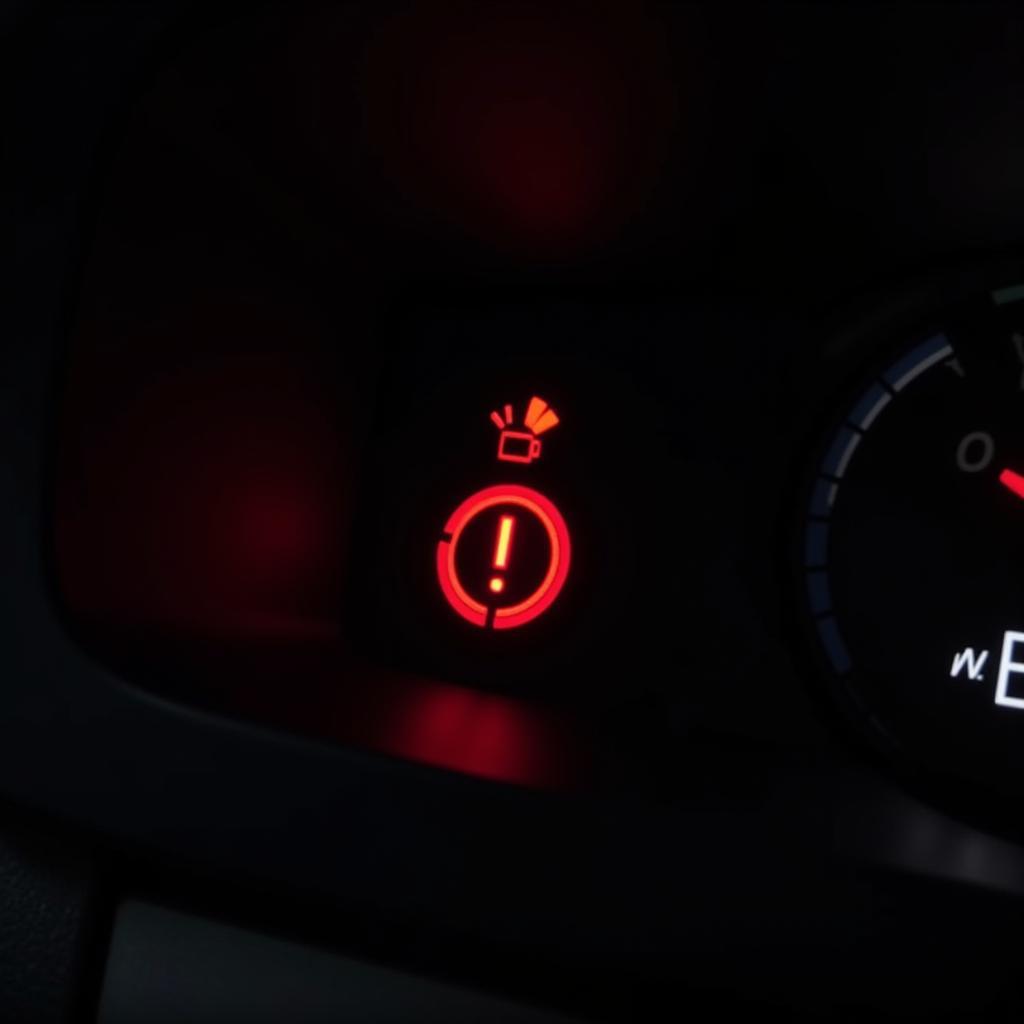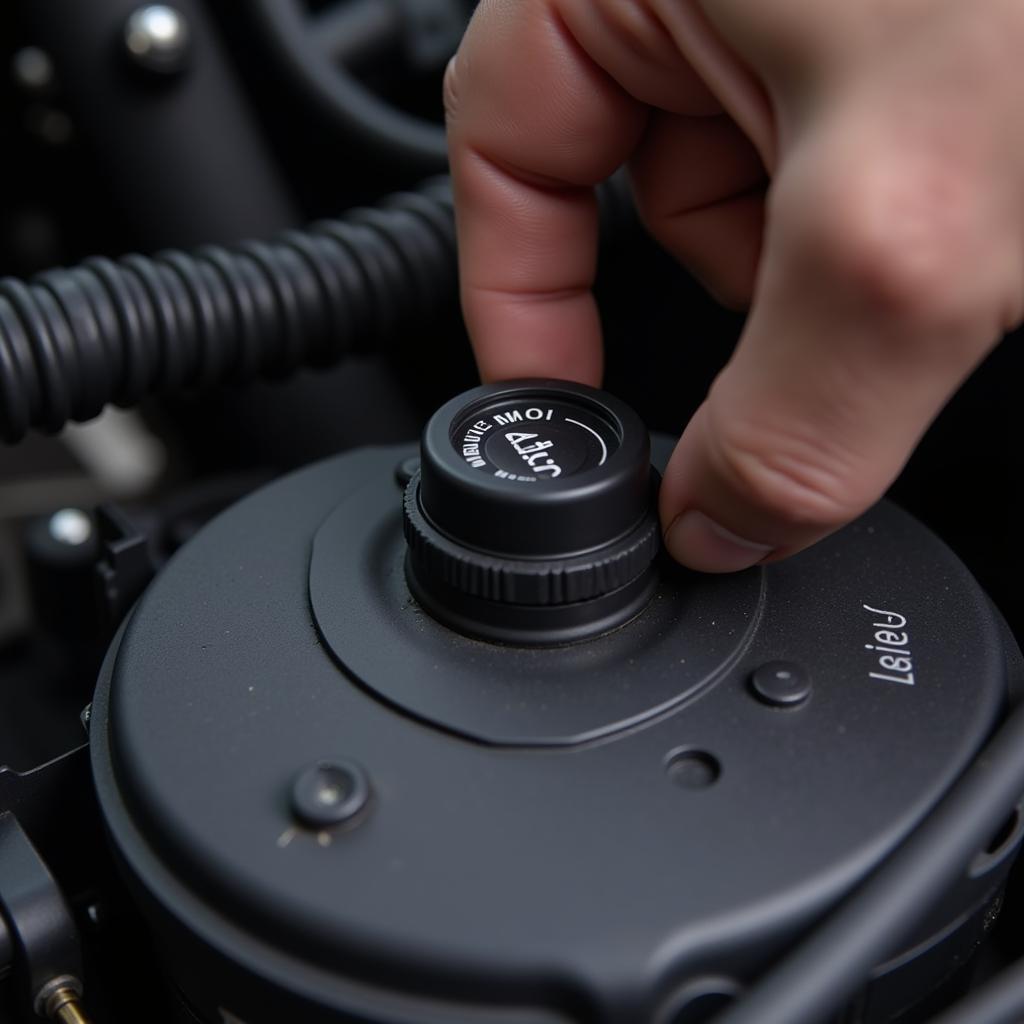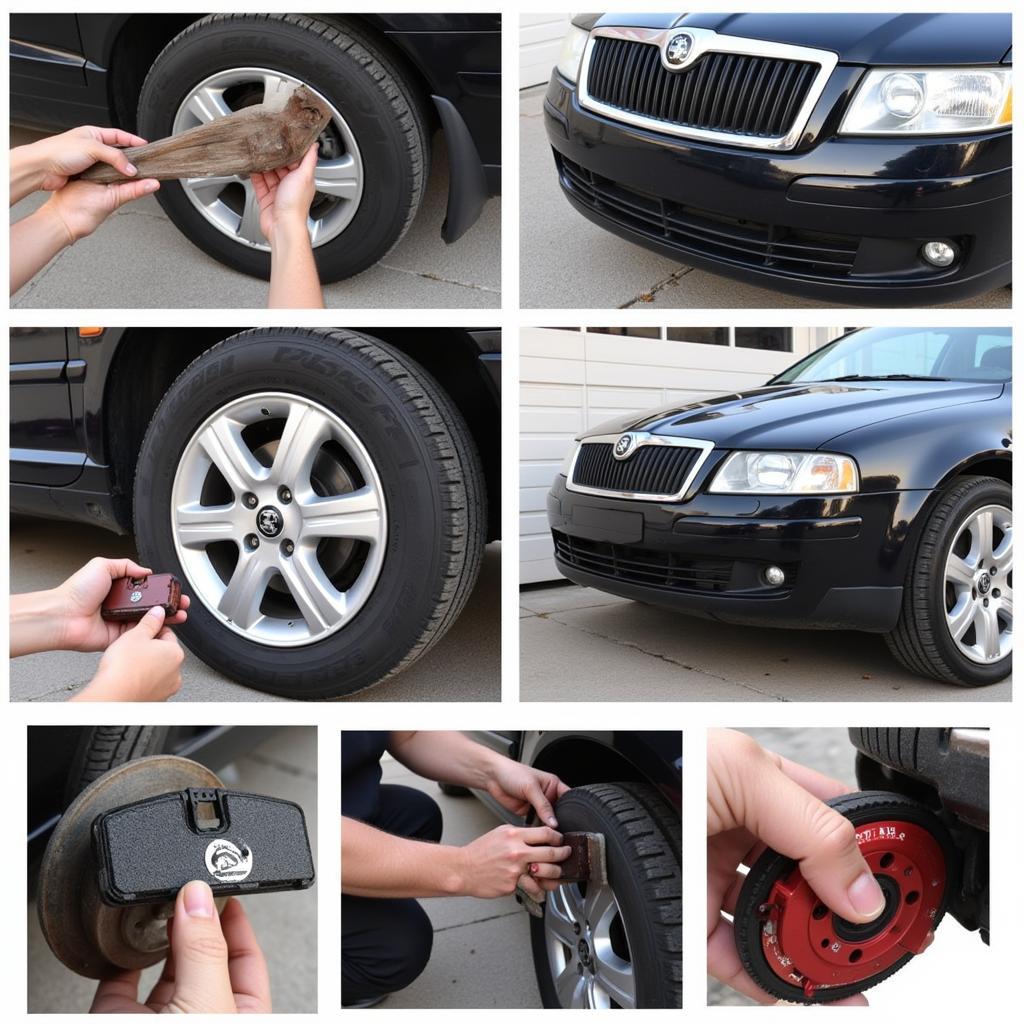The Skoda Octavia brake fluid warning light is a crucial indicator of potential braking system issues. Ignoring this warning can lead to serious safety risks, potentially compromising your ability to stop effectively. This guide explores the common causes, diagnostic procedures, and solutions for the Skoda Octavia brake fluid warning light.
If you see the brake fluid warning light illuminated on your dashboard, it indicates a potential problem with your braking system. While it might be tempting to dismiss it, especially if your brakes seem to be working fine, it’s crucial to address the issue promptly to ensure your safety and prevent further damage. This is similar to the warnings you might receive in other cars, such as the Tesla Model 3 passenger seat belt warning. Understanding the nuances of these warnings is essential for safe vehicle operation.
Understanding the Skoda Octavia Brake Fluid Warning Light
The brake fluid warning light is typically a red exclamation mark enclosed within a circle and parentheses. When illuminated, it signals a potential drop in brake fluid level or a problem with the brake system’s pressure.
Why is My Brake Fluid Light On?
Several factors can trigger the brake fluid warning light in a Skoda Octavia:
- Low Brake Fluid Level: This is the most common cause. Brake fluid levels naturally decrease over time as brake pads wear down.
- Brake Pad Wear: Worn brake pads require more brake fluid to engage, potentially triggering the warning light.
- Brake Fluid Leak: Leaks in the brake lines, calipers, or master cylinder can cause a significant drop in brake fluid. This is a serious safety concern and requires immediate attention.
- Faulty Brake Fluid Level Sensor: In some cases, a malfunctioning sensor might incorrectly trigger the warning light even if the brake fluid level is adequate.
- ABS Issues: Problems with the Anti-lock Braking System (ABS) can also activate the warning light, although this is less common.
 Skoda Octavia Brake Fluid Warning Light on Dashboard
Skoda Octavia Brake Fluid Warning Light on Dashboard
Diagnosing the Problem
Before rushing to a mechanic, you can perform some basic checks:
- Check the Brake Fluid Reservoir: Locate the reservoir under the hood and visually inspect the fluid level. Ensure it’s between the minimum and maximum markers.
- Inspect for Leaks: Carefully examine the brake lines, calipers, and master cylinder for any signs of leakage. Look for wet spots or fluid dripping onto the ground.
- Check Brake Pad Thickness: If you’re comfortable doing so, inspect the brake pads through the wheel spokes. Thin brake pads might be the culprit.
 Checking the Brake Fluid Reservoir in a Skoda Octavia
Checking the Brake Fluid Reservoir in a Skoda Octavia
If you notice a leak or significantly worn brake pads, it’s crucial to seek professional help immediately. Driving with a leaking brake system is extremely dangerous. Like Tesla seat belt warning recall situations, brake issues require immediate attention.
Solutions and Repairs
Depending on the diagnosed problem, the solution can range from a simple top-up of brake fluid to more complex repairs:
- Adding Brake Fluid: If the fluid level is low, carefully add the correct type of brake fluid specified in your owner’s manual.
- Brake Pad Replacement: Worn brake pads should be replaced by a qualified mechanic.
- Repairing Brake Leaks: Leaks in the brake system require professional repair. This might involve replacing brake lines, calipers, or the master cylinder.
- Replacing the Brake Fluid Level Sensor: If the sensor is faulty, it needs to be replaced.
- Addressing ABS Issues: ABS problems often require specialized diagnostic equipment and expertise.
 Replacing Brake Pads on a Skoda Octavia
Replacing Brake Pads on a Skoda Octavia
It’s vital to remember that brakes are a critical safety component. If you’re uncertain about any aspect of brake maintenance or repair, it’s always best to consult a qualified mechanic. Issues with seat belts, such as the Tesla rear seat belt warning, also warrant attention, highlighting the importance of addressing safety concerns promptly.
Conclusion
The Skoda Octavia brake fluid warning light should never be ignored. Addressing the issue promptly can prevent potentially dangerous situations and costly repairs. While simple checks can sometimes identify the problem, professional assistance is often necessary for a complete diagnosis and effective repair. Regular maintenance and attention to warning lights are crucial for ensuring the safety and longevity of your Skoda Octavia. Just like the Tesla car seat seat belt warning UK regulations emphasize, your safety is paramount.
FAQs
- What type of brake fluid should I use in my Skoda Octavia? Consult your owner’s manual for the specific type recommended by the manufacturer.
- Can I drive with the brake fluid warning light on? It’s highly discouraged. Driving with low brake fluid can severely compromise your braking ability.
- How often should I check my brake fluid level? It’s a good practice to check your brake fluid level at least once a month.
- How much does it cost to replace brake pads? The cost varies depending on the type of brake pads and labor rates.
- How often should brake pads be replaced? Brake pad lifespan varies based on driving habits and conditions, but they typically need replacement every 25,000 to 70,000 miles.
- What should I do if I see a brake fluid leak? Do not drive the car. Contact a qualified mechanic immediately.
- Can a low battery cause the brake fluid warning light to come on? While unlikely, electrical issues can sometimes interfere with warning lights. Have your battery checked if you suspect this might be the case. This can be relevant to the Tesla seat belt warning car seat discussion as well.
